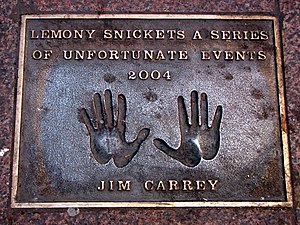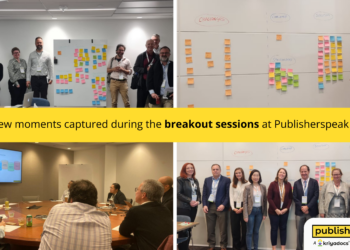
- Image via Wikipedia
I worked at the American Academy of Pediatrics in 1998, when the first tremors of the decade-long vaccine-autism conflation rumbled through medicine. I distinctly remember sitting at my desk as the physician-executives raced by, talking about thimerosal and vaccines, their normally calm demeanors rumpled with worry. These people remain in my mind at the pinnacle of well-meaning and well-intentioned physicians. It was remarkable to see them thrown into fits of such sincere anxiety, not for themselves, but for their small patients. Weekend meetings were held, conference calls were scheduled, and policy statements revised. The concern was palpable. Moreover, the feeling that something wasn’t quite right permeated the proceedings — very serious worries seemed to be emerging in the literature, yet the evidence seemed spectacularly novel. But it was impossible to indulge that sense of doubt in any obvious way once things got rolling and the media became involved. It soon became clear that the vaccine-autism debate was going to be a long slog.
The profession was put on the defensive, and had to prove that thimerosal and vaccines didn’t cause autism. They used scientific studies to unequivocally demonstrate that the association didn’t exist. However, multiple longitudinal studies and meta-analyses debunking the link between vaccines and autism failed to quell the activist- and media-driven conflagration. Even a retraction of the bedrock study failed to put an end to the public perception linking vaccines to autism.
When scientific consensus proved ineffective in changing minds in the media, that left only one arrow in the quiver — to painstakingly demonstrate the whole thing was a fraud perpetrated by vainglory, greed, and institutionalized foolishness. Fortunately, excellent investigative reporting by the BMJ recently did just this.
How much fraud went into the original Lancet paper, which launched the controversy? According to the BMJ:
. . . not one of the 12 cases reported in the 1998 Lancet paper was free of misrepresentation or undisclosed alteration, and that in no single case could the medical records be fully reconciled with the descriptions, diagnoses, or histories published in the journal.
The sad, sordid history of the vaccine-autism link is tainted with money, hubris, and naiveté. Wakefield, the physician most associated with the scandal, received money from a lawyer (Barr) with a pet theory about vaccines. But this money was laundered through medical school grants and the like so that when it was disclosed in the literature, it wasn’t seen as money from a lawyer but as money from the “Special Trustees.” As an article from the BMJ‘s reporting on the scandal states:
. . . when the Lancet paper was published, in February 1998, and the scare was launched at a televised press conference, nobody was aware that Wakefield was receiving substantial personal payments from Barr.
The goal the lawyer, Wakefield, and other physicians involved shared was to start a company that would market an expensive assay to detect problems stemming from vaccine complications, and thereby get rich. The funds used to pay for the initial study was seed money the lawyer advanced to the physicians. In addition, the parents of the children were seeking compensation for the “damage” vaccines had done to their offspring, an idea that seems likely to have also sprung from the lawyer or one of his ilk. Greed isn’t something only rich physicians fall prey to, but in this case, the physicians definitely contributed to the families’ perceptions of exceptionalism:
None of the families were from anywhere near London, and one had flown in from California. They had been targeted, pre-selected for the children’s symptoms.
Interestingly, while the lawyer funded and fueled the study, there is no evidence he urged or participated in the deception except through personal vulnerability to delusional thinking biased by an anti-vaccine tendency.
This is perhaps the most telling aspect of all — motivations like greed, pride, and fame — raw motivations — were enough to make ethically susceptible scientists distort their findings and create a damaging scientific fraud.
The media was recruited from the start, as detailed again in the BMJ coverage:
Neither school nor hospital stood on the sidelines. They threw their weight behind Wakefield. In the build-up to the press conference, they installed extra phone lines and answering machines to field the expected panic, and distributed to broadcasters a 23 minute video news release showcasing Wakefield’s claims.
Since those comparatively innocent days in 1998, when extra phone lines were needed to handle the media blitz, our 24/7 news cycle has become the most effective tool in propagating the continuing misinformation about vaccines, with Jenny McCarthy providing what I’m forced to call “celebrity” chic to the debate (I do so reluctantly — why an actress best known for posing in Playboy, marginal movies like Scream 3, and marrying Jim Carrey is a celebrity is beyond me). Even to this day, after the exposure of the fraud, she continues to insist on creating fear and doubt about vaccines.
The Internet also contributed to the misinformation being propagated about the vaccine-autism link. In a presentation I’ll never forget, Scott Karp showed at an SSP meeting and at another scholarly meeting how organizations like the American Academy of Pediatrics and the CDC failed in using search engine optimization (SEO) to bring good information about vaccines and autism to the top of Google searches on the topic. So when Jenny McCarthy’s son was diagnosed with autism and she went online to learn about it, biased anti-vaccine information greeted her on the first two pages of Google results. The sane scientific findings debunking Wakefield’s fraudulent study were too low in the rankings because these sites’ metadata were inadequate, their SEO approaches too old-fashioned.
In the decade since the vaccine-autism fraud began, measles outbreaks have been recorded, and mumps rates briefly soared to pre-1990 levels before settling down again. Rubella, fortunately, didn’t come back in any appreciable way. Public health wasn’t much affected because of the vigilant work of honest vaccine scientists in partnership with caring pediatricians and health officials. Together, they swiftly and determinedly headed this off, one patient at a time if that’s what it took.
There’s a lot to be taken from these events — peer-review’s Achilles’ heel remains fraud; editors seeking novelty at the expense of quality should rethink; health reporting continues to drive sensationalism over rational answers; fraud continues in the author ranks because notoriety and novelty continue to garner outsized rewards; and money is the root of all evil.
But there’s something else going on, I think, something closer to the plasticity of human nature. When this all started, many of those involved consistently put themselves above the evidence, placed ego and vanity before obligation and rationality, participated cynically in a plan because they felt they could stitch together a truth that could revolve around their egocentric view of the world. Perhaps, as David Brooks wrote recently in an unrelated essay (with the word “science” substituted for the word “politics”), there’s something lacking in our culture of personal exceptionalism:
. . . over the past 40 years or so we have gone from a culture that reminds people of their own limitations to a culture that encourages people to think highly of themselves. . . . So, of course, you get narcissists who believe they or members of their party possess direct access to the truth. Of course you get people who prefer monologue to dialogue. Of course you get people who detest [science] because it frustrates their ability to get 100 percent of what they want. . . . They feel no need for balance and correction. Beneath all the other things . . . the most important is this: The roots of modesty have been carved away.
Discussion
10 Thoughts on "When Fraud Hits Medical Science: The Decade of the Vaccine-Autism Scandal"
Noting that media can amplify the voice of the one over the many there are opportunities to take up the gauntlet.
One of the projects I’m engaged with is to develop and launch a Web-based platform to provide informal “peer review” of media coverage — public curation and ranking of media content on targeted subjects of social relevance.
One of the points you make, re: SEO, is that scientists are comparatively lousy marketeers (rightly so).
This calls for strategies that take up the good work of scientists and make it more visible to lay audiences.
Sure, us scientists could do a better job with SEO, but that will only work until the other side does a still better job with their SEO, right?
Scientists vs. non-scientist has been going on for all recorded history. Why do you think it would change now? Behavior on the internet is just an extension of human behavior off of it.
Yes, the popularization of scientific information has always been an issue. I don’t take it as a “versus.” Good ambassadors and excellent educators can move the needle. As for SEO, the gap that many sites failed to even acknowledge was so large, and remains so large, that I think it certainly doesn’t meet their outreach ambitions, and works against them in fact.
There is no infinite realm of SEO. There is too little and enough. It’s time for traditional information providers to realize how people get information these days. It’s not through their portal sites.
Interesting parenthetic comment on “celebrity”. Presumably, the word originally meant somebody whom one “celebrates”.
I take your point!
It’s kind of funny that my first incorrect glance of your title made me see “When Freud Hits Medical Science…”. He knew the workings of humans and how to market… I thought of this again when you mentioned SEO.
Scientists and science writers, healthcare practitioners, etc… need to get the content in the hands of people that need to see it. Is it a bit like leading a horse to water? Keep trying and thanks for writing this excellent article.
It’s interesting that in this case charges of fraud were brought to defend good science, whereas in the climate change debate fraud was charged in order to throw doubt on good science.
It baffles me that after the retraction, after the fraud accusations, public opinion on the vaccine-autism link remains strong. I think scientists should get makeovers and pose for Playboy. Maybe then the media would pay a little more attention to what we say! 🙂
Is it possible that you are conflating two things?
Wakefield’s famous press conference was held February 28, 1998 (the measles-autism announcement & warning of dangers of the MMR vaccine). As a reminder, the MMR never contained thimerosal.
The thimerosal issue didn’t really come up until the summer of 1999.
It wasn’t until July 9, 1999 that the AAP and the Public Health service issued a joint announcment about thimerosal in vaccines having a small potential to harm.
See pages 18-24 (Wakefield) and page 62-73 (thimerosal) of Paul Offit’s Autism’s False Prophets.



